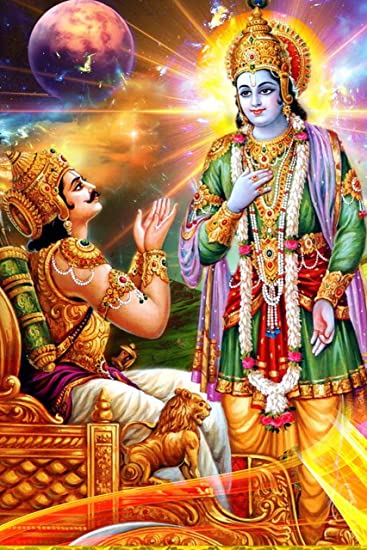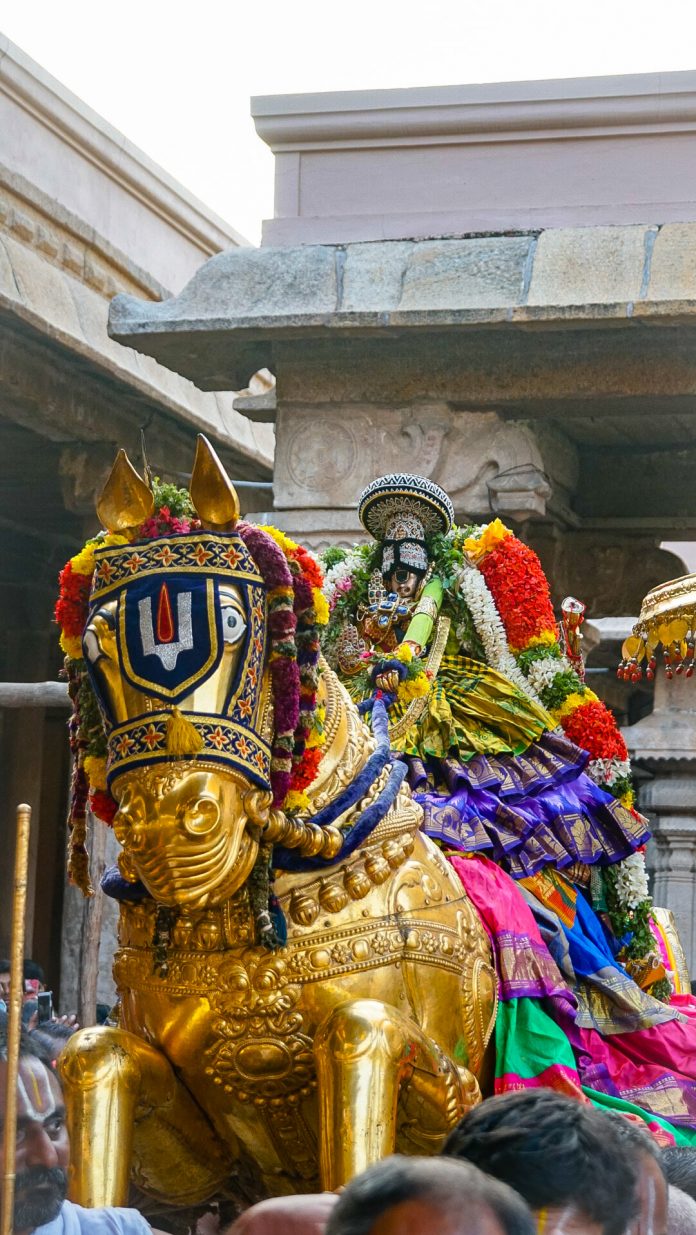21 December 2021, Plava varusha, Margazhi -06, Tuesday ;


SLOKA-19: SAANGA-PRAPADHANADHIKARAM: THE 12TH CHAPTER OF SRTS. EXPLANATION OF THE SVAROOPAM OF PRAPATTHI

This 19th Paasuram of AdhikAra Sangraham explains the ways to perform one of the four kinds of Prapatthi (Svanishtai, Ukthi Nishtai, AchArya Nishtai and BhAgavatha Nishtai).
MEANING: Our Lord has vowed to protect us because of our eternal and indissoluble relationship with Him. He longs from ancient times (anAdhi Kaalam) to gain us and blesses us with His rejuvenating shower of Mercy. Our AchAryAs — who have seen the shores of VedAnthA– recognize us as the Jeevans needing that protection of the most merciful Lord and have placed us at His sacred feet for unfailing protection. The key passage of this 58th Paasuram is: “MaRai soodiya namm mannavar—-perum tahavu uRRa PirAn adik-keezh bharam aRavE yenRu adaikkalam vaitthanar” (Our AchAryAs as Emperors of VedAntham have placed us at the feet of our most merciful Lord as objects that need protection from Him. They did so because they wanted the chEthanam to banish any thoughts about protecting itself by itself.

ADDITIONAL COMMENTS: The act of reverential presentation (samarpaNam) of the AathmA is the angi with five angAs, Aathma SamarpaNam or Prapatthi. This angi (Prapatthi) or Bhara SamarpaNam with its five angams has the following three divisions: 1) Svaroopa SamarpaNam (surrender of Aathma Svaroopam) 2) Aathma RakshA Bhara SamarpaNam (surrender of the burden of the chEthanam’s protection to the Lord Himself) 3) Phala SamarpaNam (Surrender of the fruits of such a protection to the Lord Himself).
SLOKA-20: KRUTHA-KRITHYADHIKARAM: THE 13TH CHAPTER OF SRTS THE STATE OF FREEDOM FROM WORRIES AFTER PRAPATTHI

MEANING: Our Lord VaradarAjan grants the boon of Moksham to the chEthanam that has performed Prapatthi. He does not stop there. He also grants Moksham even to those, who are connected to the chEthnam. Even after that, our PeraruLALan keeps reflecting on what other boons He can grant to the Prapannan. As a result of performing their Prapatthi, those blessed PrapannAs acquire the qualities of being (1) our kings (2) nithyasooris (3) solely dedicated to their enjoyment of Parama Padham (4) ParamahamsAs and (5) completers of all Yaj~nams. The key passage of this Paasuram is: “anbu udayArkku yenna varam tara yenra Namm Atthigiri ThirumAl, namm mukkiyar Mannavar, ViNNavar,Vaann karutthOr, Annavar vELvi anaitthum muditthanar” aha aruLinAn.

ADDITIONAL COMMENTS: The reasons for celebrating the ChEthnam, who has performed Prapatthi as Krutha Kruthyan and KruthArTan are: (1) The burden of protection has been removed (2) the worries and fears about the sureness of gaining the fruit of Moksham has been banished and the tranquility was gained (3) ParamaikAnthithvam resulted and the bonds to other dhaivams were shattered. These all resulted as a direct consequence of the Lord, who is Sarva Sakthan (Omnipotent), Sarvaj~nan (Omniscient) and Sahaja Suhrudhi (our well wisher by SvabhAvam). He accepted the burden of protecting us (Sveekrutha BharE) and as a result, the Prapannan became Krutha Krutyan and Kaimkarya dhaninan (the possessor of the wealth of Kaimkaryam to the Lord). The Prapannan got immersed in the ParipoorNa BrahmAnandham of the limitless ocean of Bliss (nirupadhi MahAnandha Jaladhi). The Prapannan became krutha Kruthyan and has nothing to do in this world for Moksha PrayOjanam any more (YadharTam puna: karthavyam yath kinchidhapi, iha na: na). The Prapannan (One who has performed Prapatthi) is now revered as Budhan or the One who has clear knowledge about his svaroopam. He abandons therefore all the acts that are forbidden by SaasthrAs of the Lord and yield insignificant and transient pleasures (parimitha sukha prApthyai kruthyam akruthyavath praheeNam). During the rest of the days in this samsAram (post-prapatthi period), the command of the Lord as revealed by His Saasthrams are used as a guide for conductance of the life (iha VibhO: aj~nAsthu: param Bhudhai: anupAlyathE).

Courtesy: Oppiliappan koil Sri.V. Sadagopachariar








